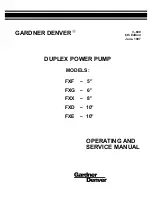
Boost Stage and Forward Converter
Q5 and boost inductor L3 raise the incoming, full wave rectified, sinusoidal mains voltage to a
value some 20V higher than the peak of the maximum rms input voltage. This is achieved by
storing energy in L3 when Q5 is conducting and transferring it to C88 via boost diode D54 when
Q5 is turned off.
When Q5 next turns on, D54 is still conducting current. To prevent large switch on losses in Q5, a
delay inductor L9 is placed in series with Q5. This ensures that the current in the boost diode D54
is reduced at a gradual rate and the reverse recovery time is minimised at the same time as Q5
drain voltage is allowed to fall rapidly.
The energy stored in L9 is stored in C119 via D67 and dissipated in R92 and R95.
A dual ended forward converter comprising of Q4, Q7 and TX2 converts the boost voltage across
C88 to provide two isolated low voltage secondaries and also the required secondary auxiliary
voltages.
TX2 leakage energy is returned to the high voltage supply rail via D2, D3 and D4, D5 . The turnoff
voltage rise is controlled by ‘loss less’ snubber network C27, C28, D61, D63, D69, L10. R20
damps any oscillation across L10 .
The gate drive to Q4 and Q7 is by means of a gate drive transformer TX1.
The drive signal is generated by an oscillator IC1A and IC1B. This is converted into two square
waveforms by D-types IC7A and IC7B.
The square waveform from IC7A is ‘duty cycle reduced’ by R9, D39, IC1D then buffered by IC1E
and IC1F and is used to drive Q2 and Q3.
The current in the forward converter is monitored by R16 and, if excessive, activates latch Q22,
Q23 to provide a pulse-by pulse current limit.
The square waveform from IC7B is processed by Q19 to provide a synchronisation pulse for IC8.
Main Outputs
The component references given refer to Channel A, the left-hand (slave) channel which is
marked Output 1 on the front panel. Channel B, the right-hand (master) Channel is identical
except for Q15 and L7 which are up-rated components because Channel B supplies 4 Amps in
the 75V/4A mode; refer to the circuit diagram and parts lists for details.
The voltage on the secondary winding is rectified and L-C filtered and fed to a linear regulator. To
minimise power dissipation in the linear regulating element, the voltage across it is maintained at
about 1V by means of a magamp.
The linear regulation is performed by MOSFET Q14 which receives gate drive from the front
panel pcb. The voltage across Q14 is monitored by Q11 which generates reset current to the
magamp whenever the voltage across Q14 forward biases the base-emitter junction of Q11.
D24 is the main rectifier and flywheel diode. The rectified pulse is filtered by L6 and C33.
Q8 minimises parasitic reset of the magamp by bypassing D24 reverse leakage currents during
the fly back period.
D44, D47, D48, R111 and C76 generate a negative rail to sink the base bias current of Q11 which
would otherwise cause the output to remain slightly positive when 0V was set on the front panel.
In the event of a fault where control of the magamp is lost and the voltage across the filter
capacitor C33 rises above 88V, the opto isolator IC13 is activated and causes primary side
thyristor SC1 to discharge the primary control power rail. This is followed by a normal restart. If
the fault persists, the PSU will continue to ‘hiccup’.
Secondary Auxiliary Power Supply
The power rails for the control electronics of the two main outputs are generated from auxiliary
windings on the main converter transformer.
6
Содержание EX752M
Страница 1: ...EX752M 75V 150V Multimode Power Supply Service Manual Manual Part Number 48511 0470 Issue 1 ...
Страница 20: ...Component Layouts Main Board 19 ...
Страница 21: ...Control Board 20 ...
Страница 22: ...Circuit Diagrams 21 ...
Страница 23: ......
Страница 24: ......
Страница 25: ......








































